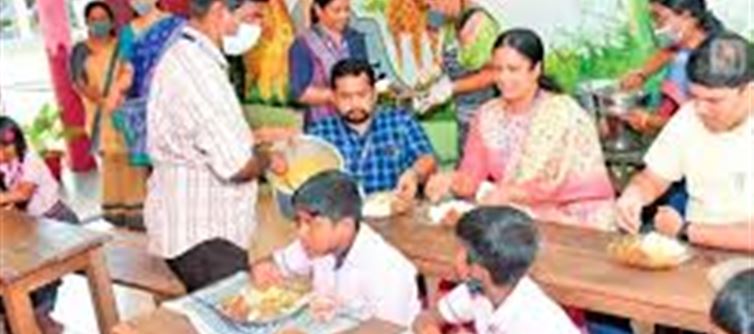
The Kerala General education Department had announced a revised mid-day meal menu to be mandatory from September 1, but schools across the state are facing delays in implementing the changes. Here’s a closer look at the situation.
1. New Menu Launch Faces Delays
Although the Anganwadi new menu—including items like Nutri Laddu and egg Biryani—is set to be inaugurated on Tuesday, full implementation across schools and Anganwadis will take time. Many schools still lack clarity on executing the changes, despite the academic year starting.
2. Inconsistent Preparation Across Districts
Some districts have already introduced fried rice, lemon rice, and vegetable biryani on a trial basis. However, the majority of schools continue to serve the old menu, highlighting the inconsistencies in funding, staff readiness, and preparation logistics.
3. teachers and Staff Face Practical Challenges
Cooking staff received training during the onam holidays for the new dishes, but teachers are concerned about practicality. With the revised menu not yet uploaded to the department’s website, teachers continue submitting meal information using the previous system, providing temporary relief.
4. Weekly Menu Requirements
Under the new plan, schools must prepare one of the following fortified rice dishes per week: vegetable fried rice, lemon rice, vegetable biryani, tomato rice, or coconut rice. These must be accompanied by vegetable curry or kuruma, while other days continue with rice, curry, and thoran. chicken can be included if available.
5. Menu Oversight and Parent Involvement
The department recommends presenting the menu to a parents' committee to ensure implementation. However, concerns remain about whether dishes like fried rice and lemon rice will effectively prevent anaemia and obesity in children, as intended by the new nutrition plan.
6. Financial Concerns for Schools
Currently, central and state contributions provide Rs 6.78 and Rs 10.17 per child in pre-primary, primary, and upper primary categories, with free rice and cook salaries covered. Yet, schools report that additional costs for the revised menu could require at least Rs 8,000 per month for a school with 100 students, creating a financial burden if state funds are insufficient.
7. Moving Forward
While the revised mid-day meal menu aims to improve child nutrition, practical challenges and funding gaps are slowing its rollout. Full implementation may take months, and schools will need support and monitoring to ensure that students receive the intended health benefits.
Disclaimer:
The views and opinions expressed in this article are those of the author and do not necessarily reflect the official policy or position of any agency, organization, employer, or company. All information provided is for general informational purposes only. While every effort has been made to ensure accuracy, we make no representations or warranties of any kind, express or implied, about the completeness, reliability, or suitability of the information contained herein. Readers are advised to verify facts and seek professional advice where necessary. Any reliance placed on such information is strictly at the reader’s own risk.
.jpg)




 click and follow Indiaherald WhatsApp channel
click and follow Indiaherald WhatsApp channel